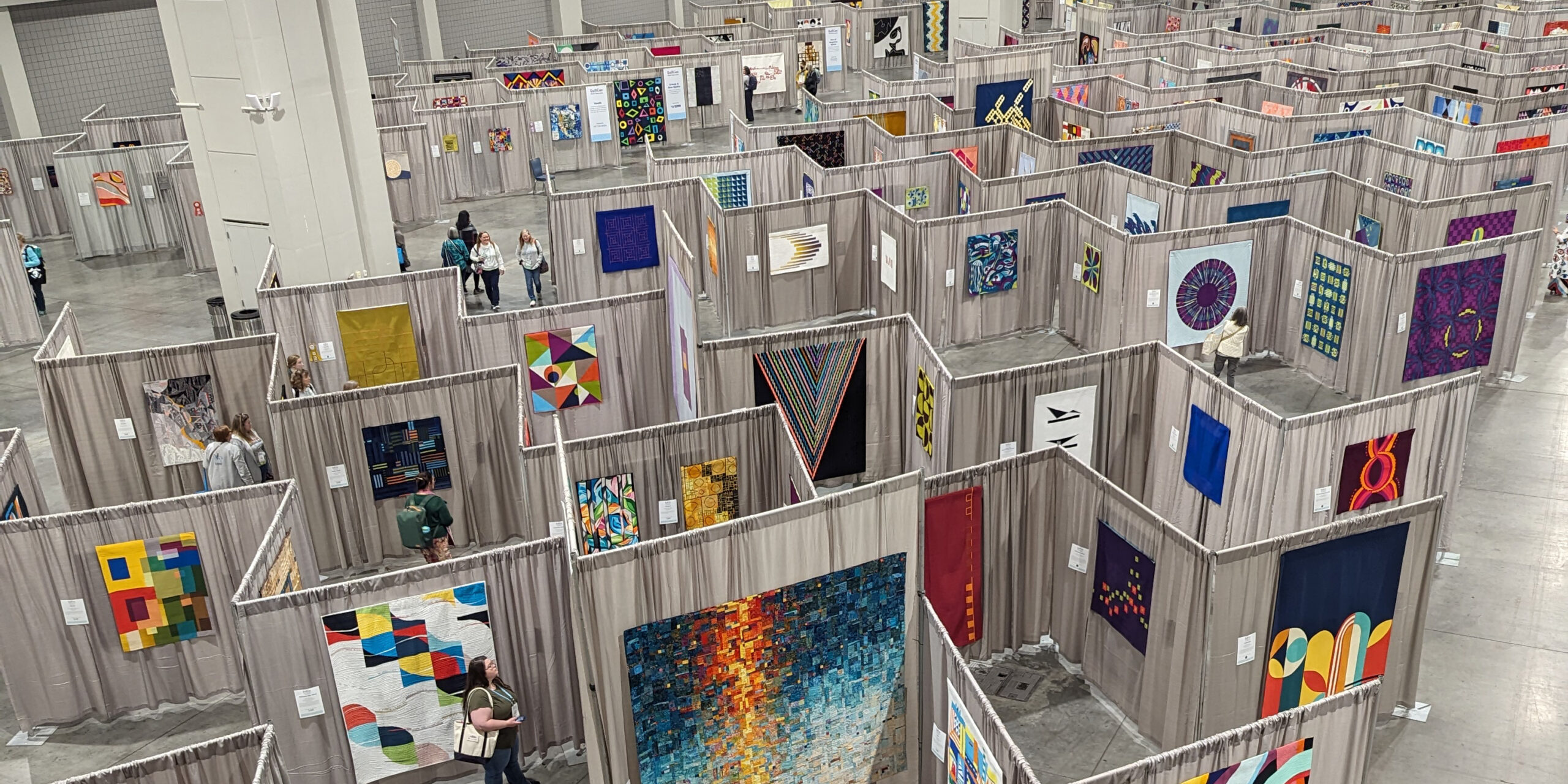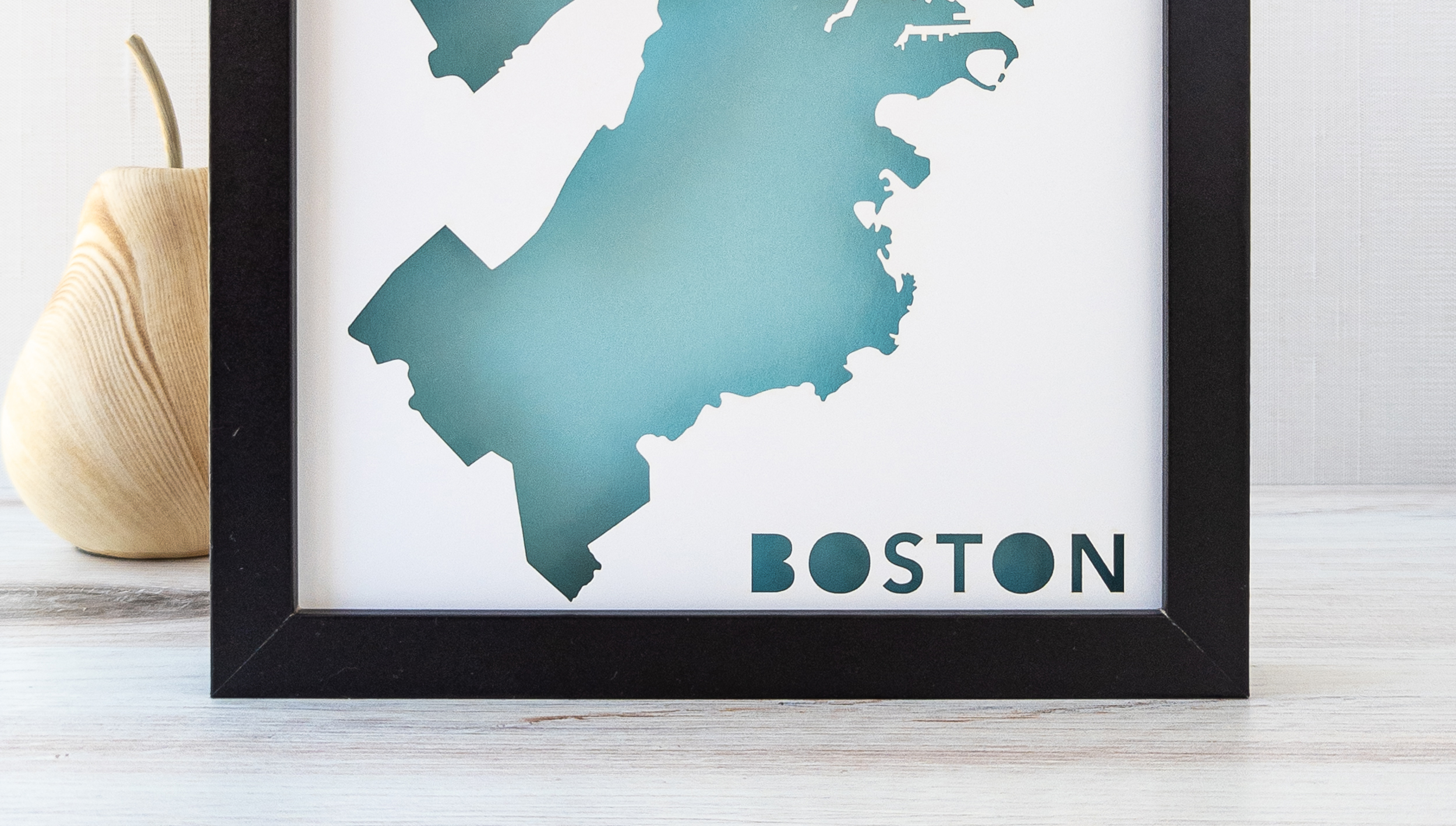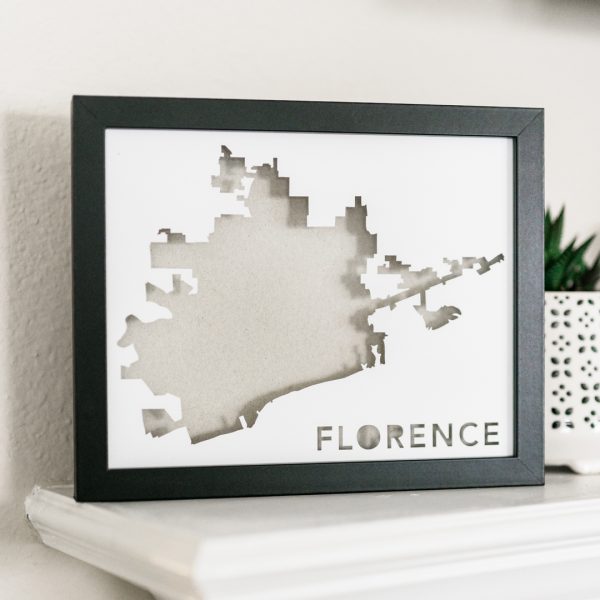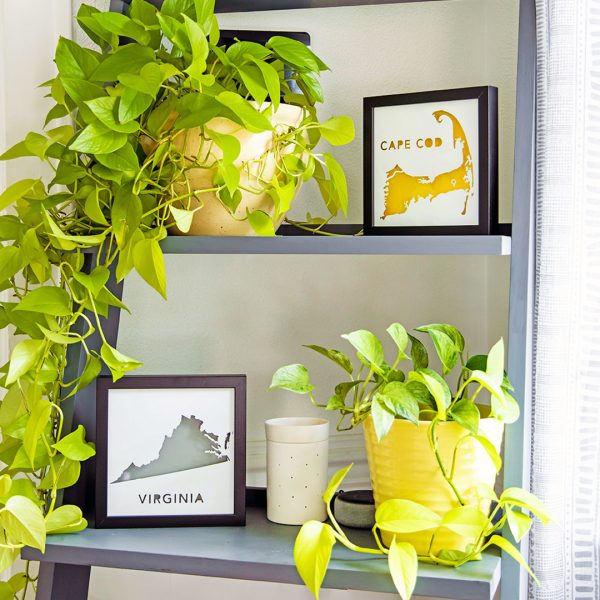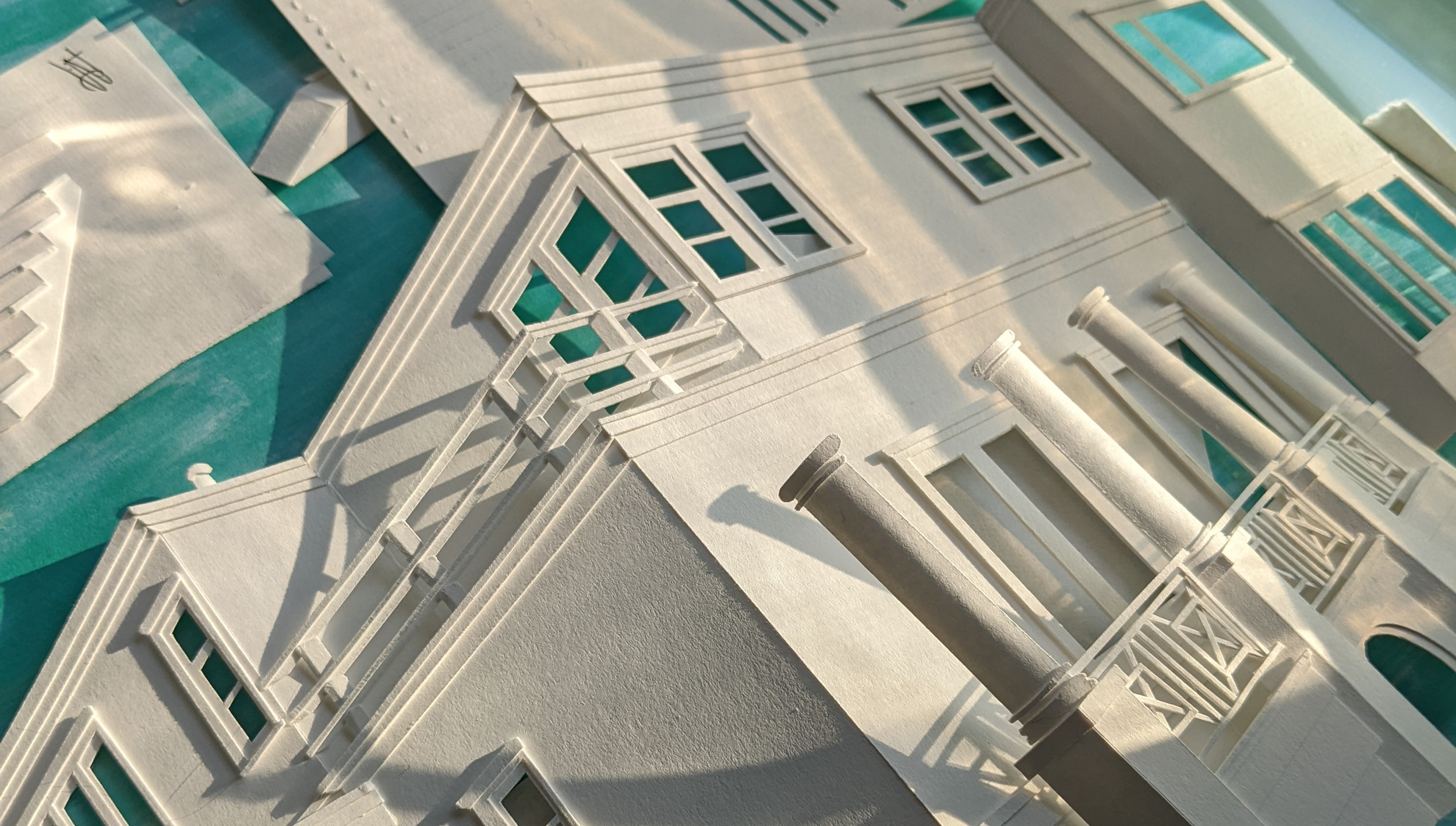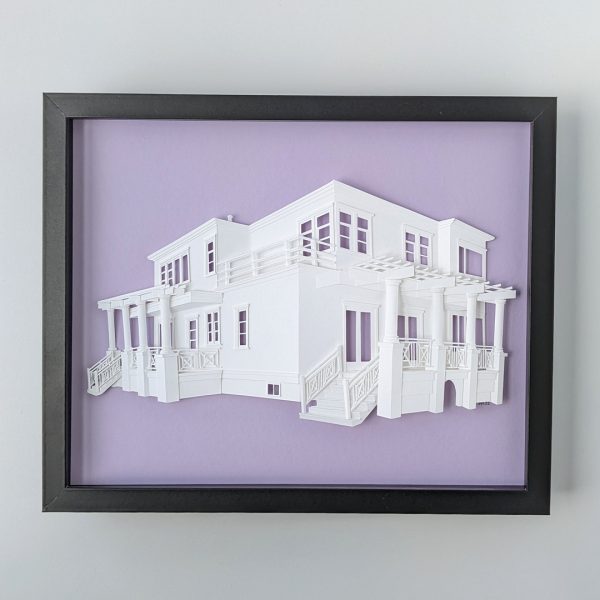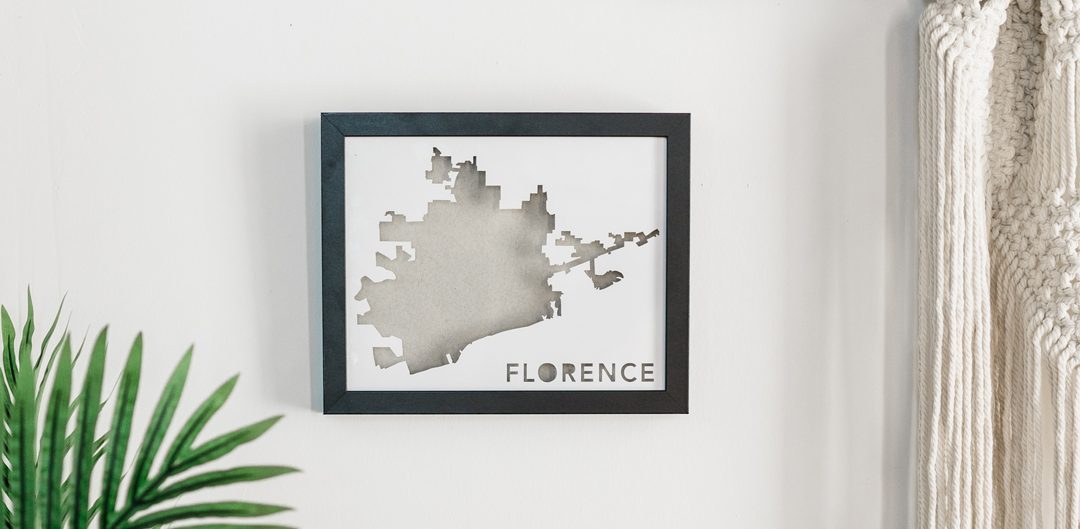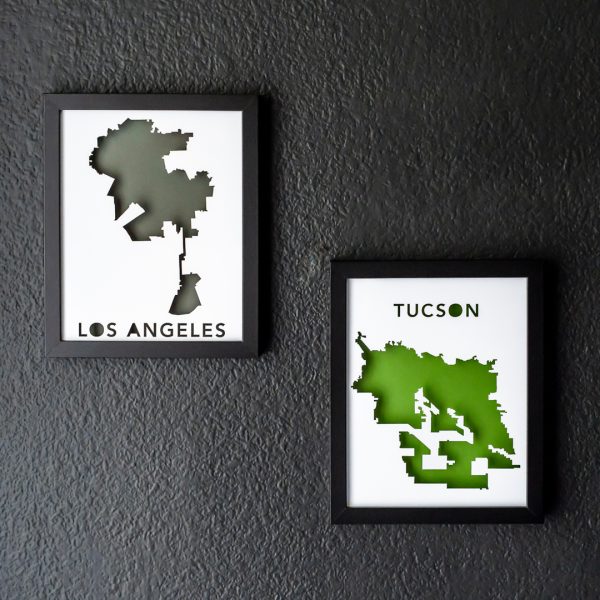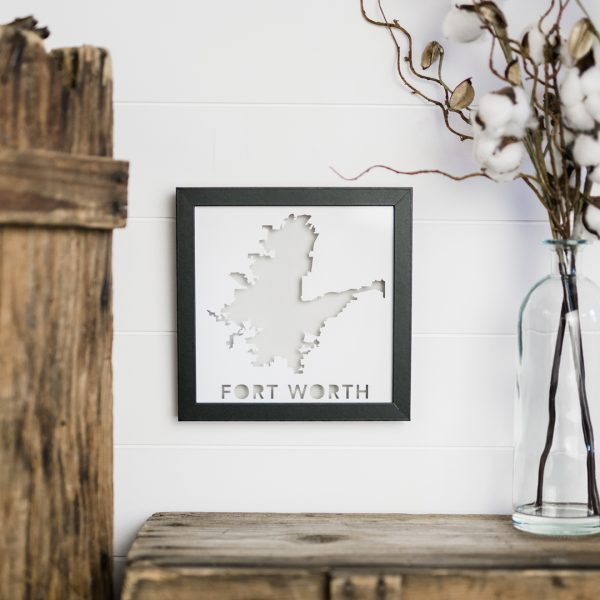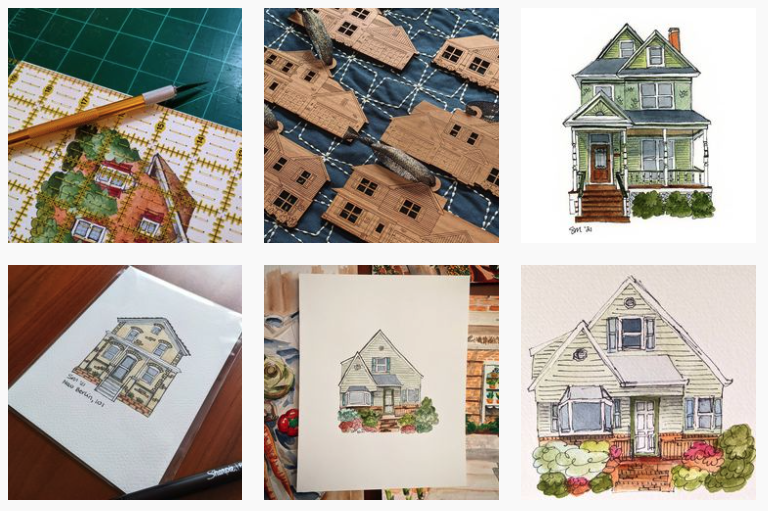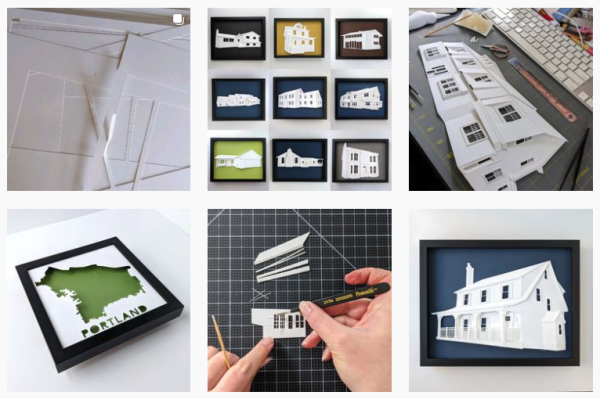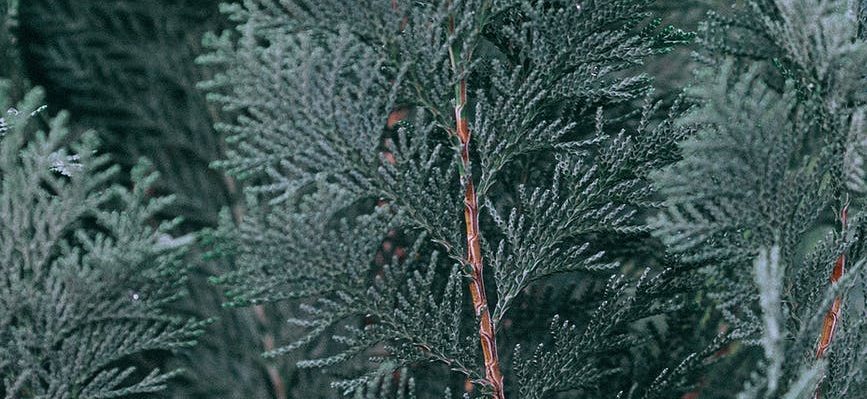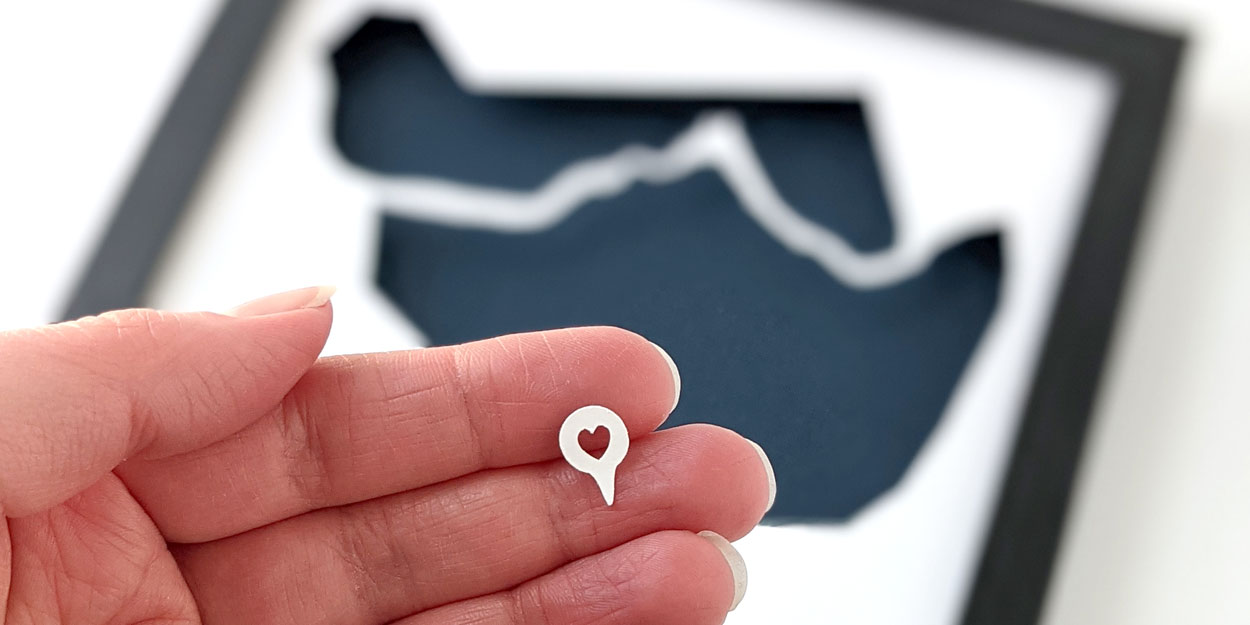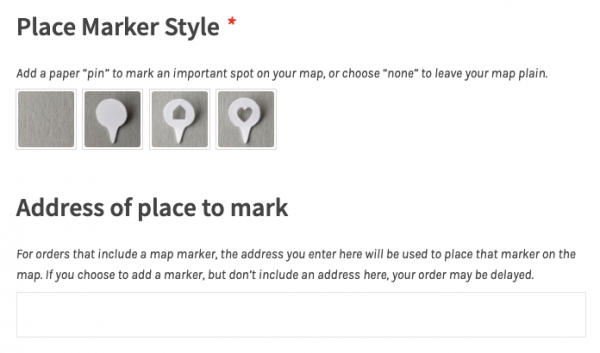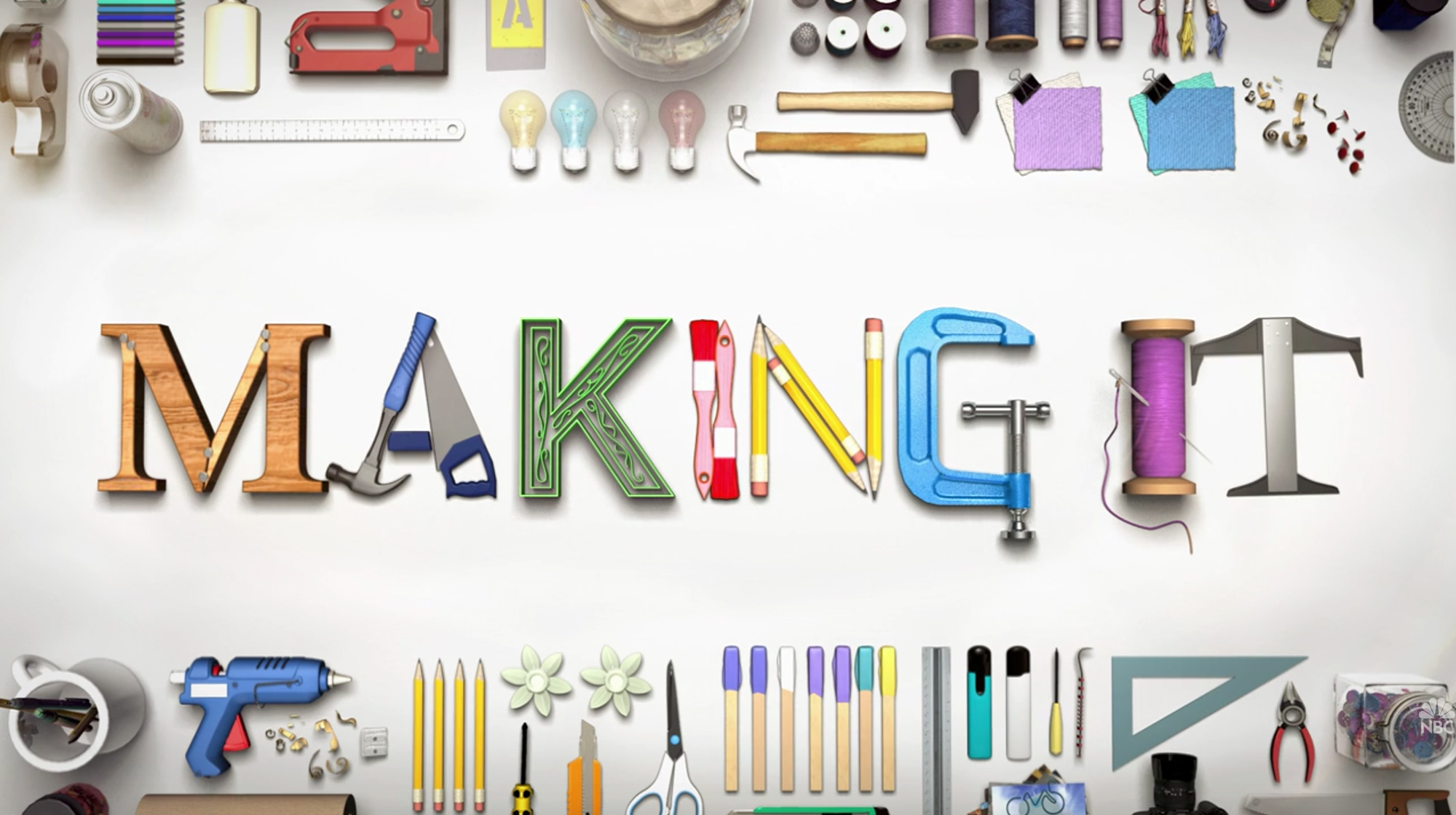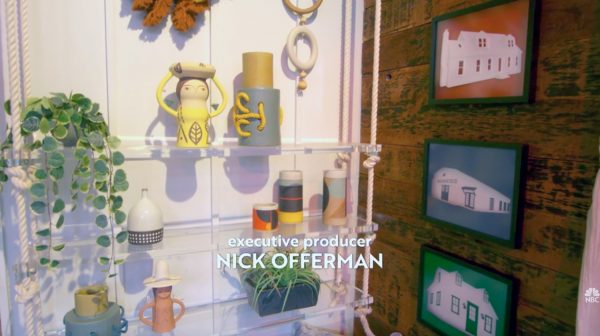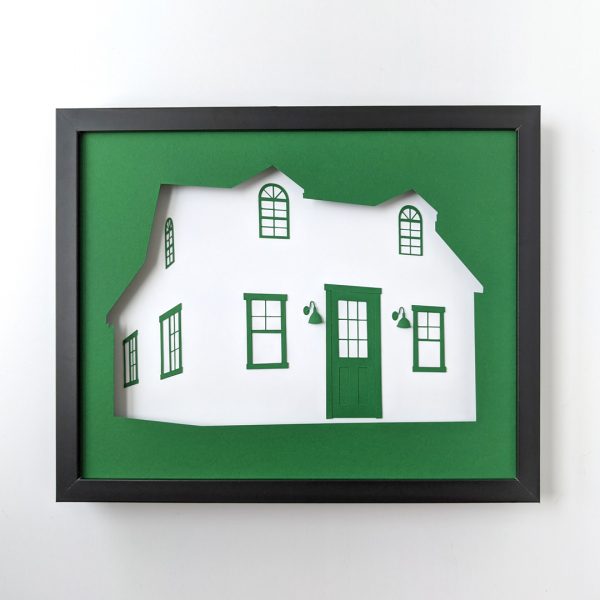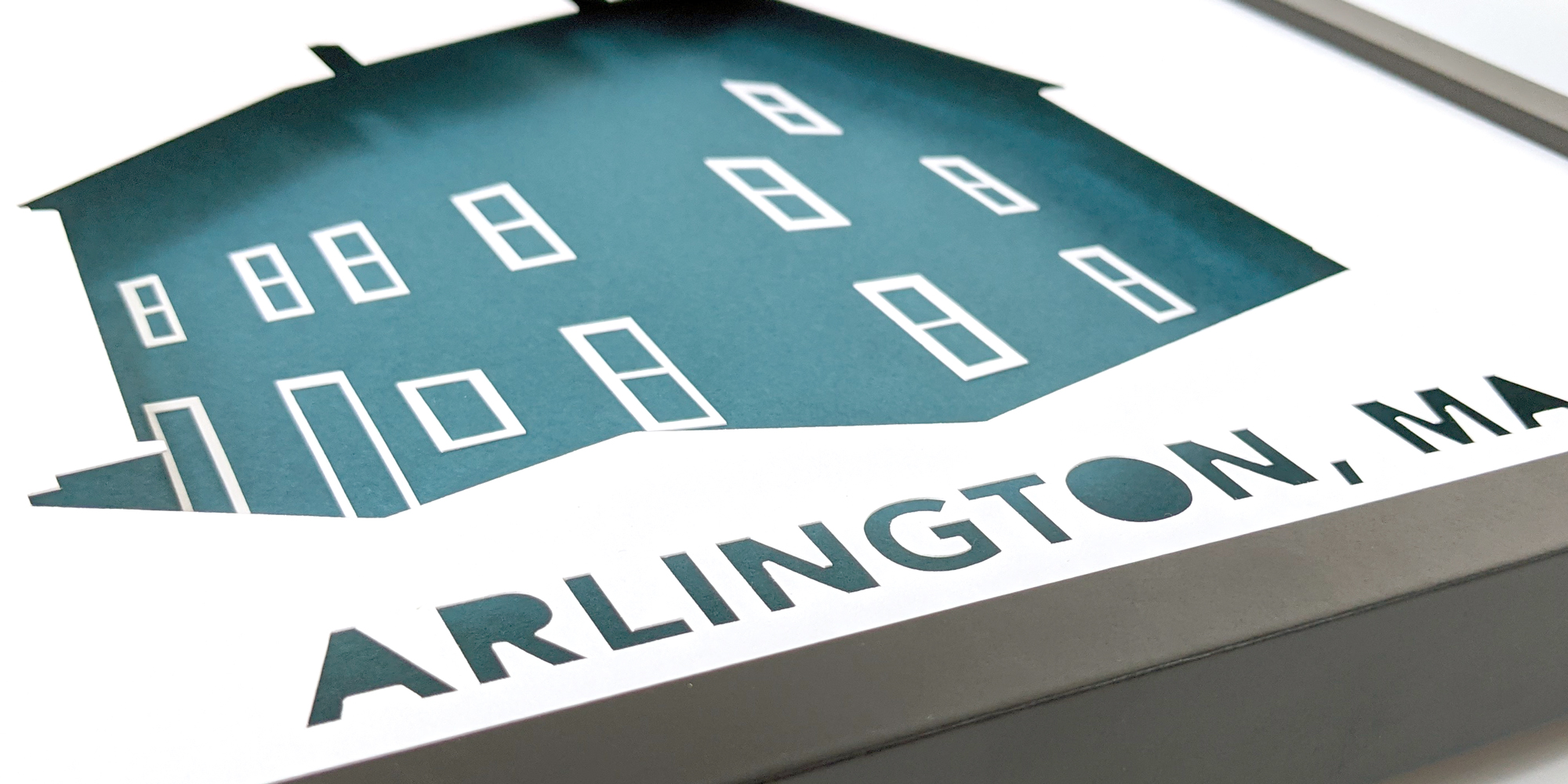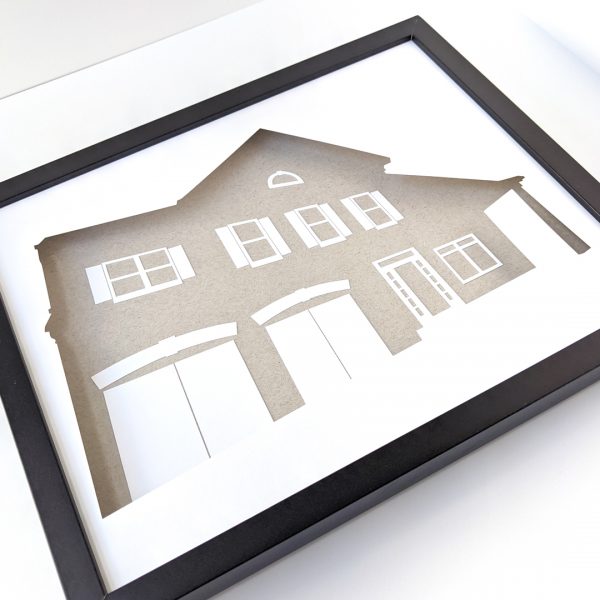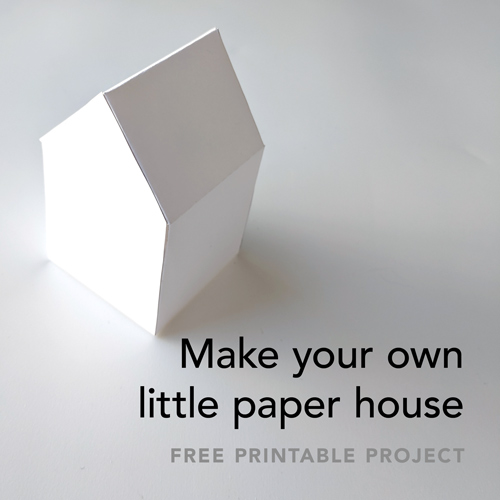One of the best things about working with paper and digital cutting machines, is that I can offer really affordable customization. In addition to over 100 already-designed Paper Places, I can create a custom Paper Place of just about any part of the world!
I’ve had the honor of creating some special custom pieces for folks this summer.
A one-of-a-kind map of a special island in South Korea

Islands are one of the most interesting types of geography to make a custom map for! Islands tend to be visually interesting because the boundaries of an island are determined by the environment and not politics. My maps of islands off the coast of Maine and New England have always been popular since they’re such common vacation destinations, and hold a lot of special memories for folks. This island off the coast of South Korea, Jeju, holds special meaning for a family I met at an event this spring. I was excited to make this map at a larger 11×14 frame size so that the details of the coastline really get to shine.
A custom format for South Portland, Maine

Sometimes customization is more about the format than the design. This map of South Portland is the same design as the smaller version I make, but it was commissioned at a larger size to match some other artwork the client already had. I typically work from digital artwork and use a computerized cutting machine to cut the final paper. This piece was too large for my machine, so I figured out how to cut it by hand! I know there’s a long and storied history of folks cutting paper by hand, but this was my first real adventure into that process, and I learned so much. I have so much respect for the artists who can create beautifully intricate paper art by hand.
Heading across the pond to Oxford, England
I met two geography professionals at an event a few weeks ago, and we spent some time nerding out about different map data formats and software. These are things I knew nothing about before I started making maps! My first few custom orders were for cities and towns near me in Boston, MA, and it was reasonably straightforward to find the data I needed. As I’ve fielded requests for more far-flung custom orders I’ve had to learn more about the geographic data world! This map of Oxford, England was a delight to make, and I enjoyed figuring out how to include the River Thames since it’s such an important part of the city.

Commission your own custom map art
Curious about having your own map made? Whether you’re looking for a unique gift, or a way to display a place that is meaningful to you, I can make that happen! If you know exactly what you’re looking for, simply head on over to the Custom Paper Place listing in my shop, choose your options, and I’ll get started right away! I am also happy to answer any questions about the process or the possibilities–feel free to get in touch via the form on my contact page.

